WATCH: Is This $17 Million Long Island Home the Real Great Gatsby Mansion?
When you get down to it, The Great Gatsby is nearly as much about real estate as it is reaching for your dream.
And if you have $ 16.9 million, you may be able to buy a bit of both.
Many peg Long Island’s Harriman Rumsey residence, a century-old mansion currently listed with Daniel Gale Sotheby’s International Realty, as the Gatsby house. In truth, several houses share the claim.
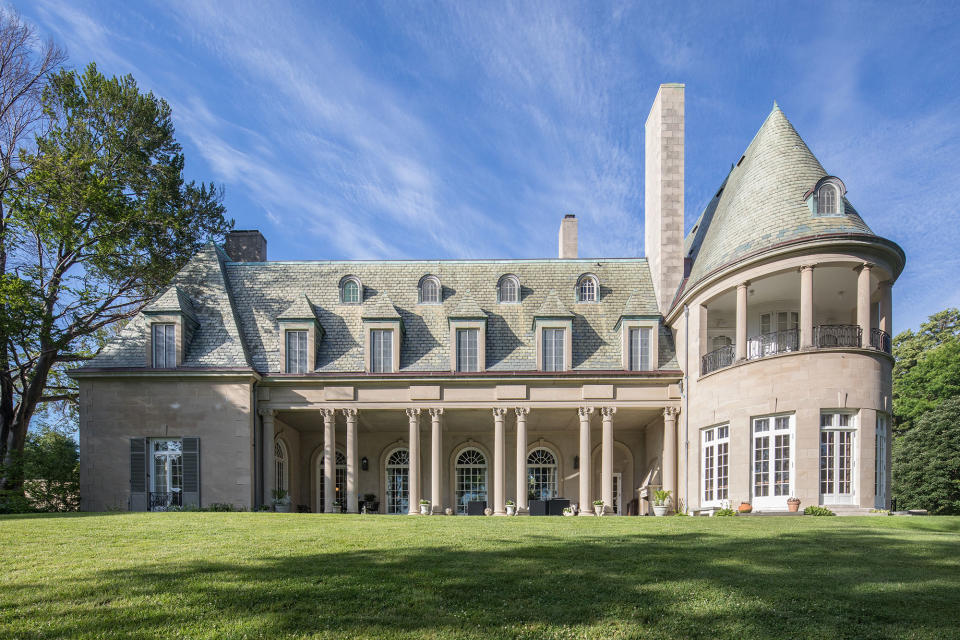
F. Scott Fitzgerald‘s 1925 novel is set in The Eggs, a fictionalized version of the North Shore’s ‘Gold Coast,’ which was an established retreat for the Vanderbilts, Astors and Hearsts when the author moved there with his wife, Zelda, in 1922.
He sourced generously from his own life while writing Gatsby. And while he shifted scenery, scrambled and, some argue, flipped the region’s geography, scholars and locals agree that the town of Sands Point — specifically the mansions along Middle Neck Road —provided major Eggs inspiration.
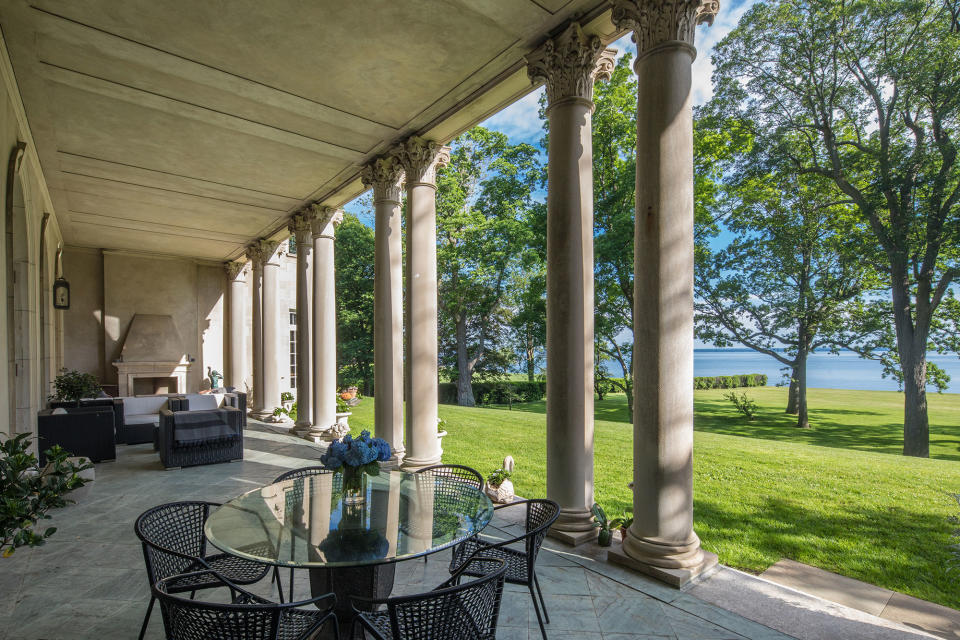
At the end of the long country lane, by Long Island Sound, there are the remains of Beacon Towers, the massive, 100-room Vanderbilt-Belmont estate. Around the point, Land’s End, which many felt was model for Tom and Daisy Buchanan’s “cheerful red-and-white Georgian colonial mansion,” was demolished in 2011. And just a few hundred yards down the beach, flanking the Harriman Rumsey house, are Castle Gould and the immense Guggenheim manor ‘Falaise,’ a major party crib in the Twenties.
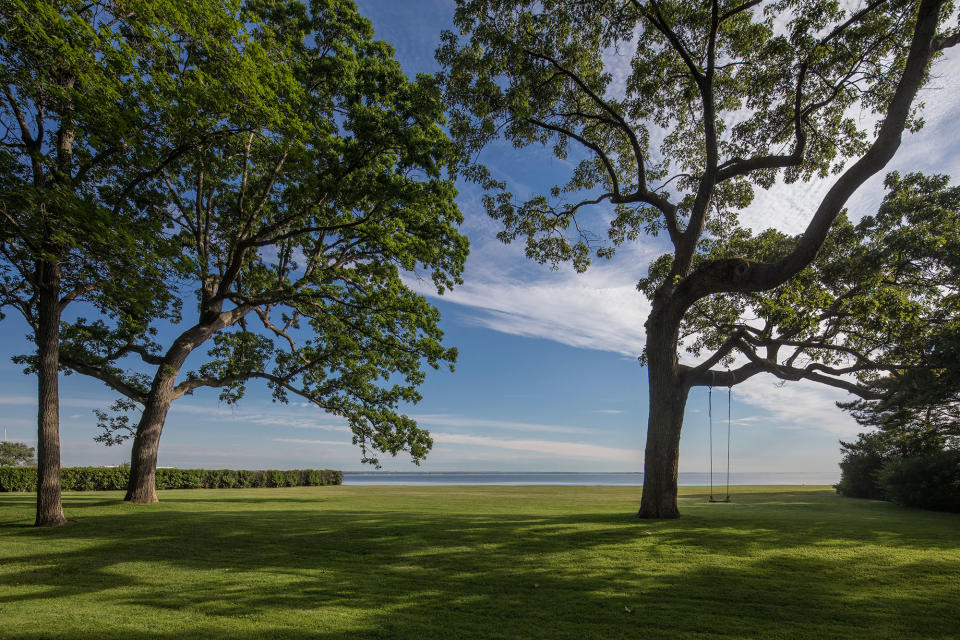
A discrepancy in the construction timeline disappoints those who might want to believe the Harriman Rumsey house served as sole inspiration for Jay Gatsby’s mansion.
The home’s owner, Mary Harriman Rumsey, moved onto her Sand’s Point property in 1922, but didn’t actually build the current house until 1926.
Fitzgerald, after two years of writing, left for the south of France in April, 1924.
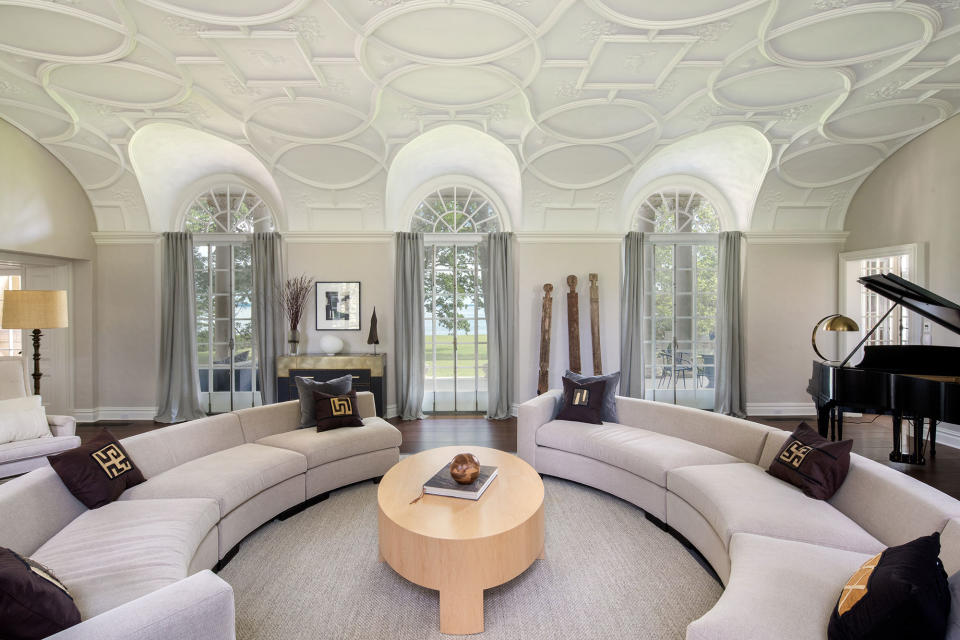
It is nonetheless an enviable property and one need only glance at the finished home to recognize the distinct symbiosis between the novel and the house that Gatsby’s neighbor, Nick Carraway, describes as “a colossal affair by any standard — it was a factual imitation of some Hotel de Ville in Normandy, with a tower on one side.”
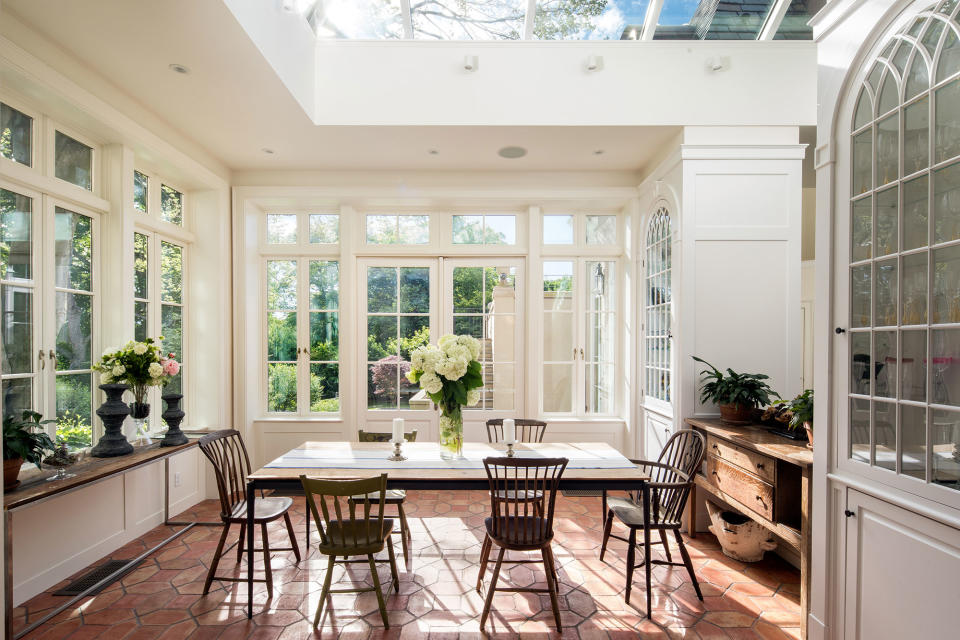
Approached today by a concealed drive, the house boasts a wide flagstone courtyard and an impressive three-story French Normandy-style facade with a mansard roof. Inside, the sheer volume of space recalls the grandeur of another century. A formal dining hall opens out through French windows onto a loggia. There’s considerable light, views of the water from within the house and, as Fitzgerald wrote, “height and splendor” and “great rooms opening out . . . into other rooms.”
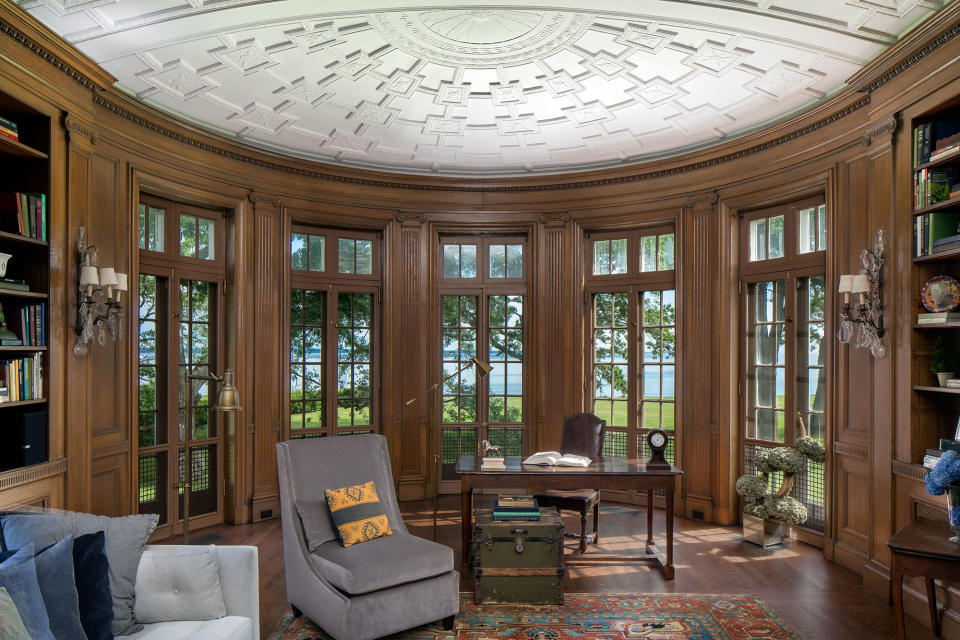
Originally, designed by McKim, Mead & White, New York’s most prestigious architectural firm for a half century, the house underwent extensive renovation in 2012 which preserved and restored the best of its era’s interior aspects: its tall living areas, fireplaces, a period oak-paneled library. There are 13 original bedrooms, 8.5 baths and a large, open-plan kitchen fitted in period style and typical of a home built for great entertaining.
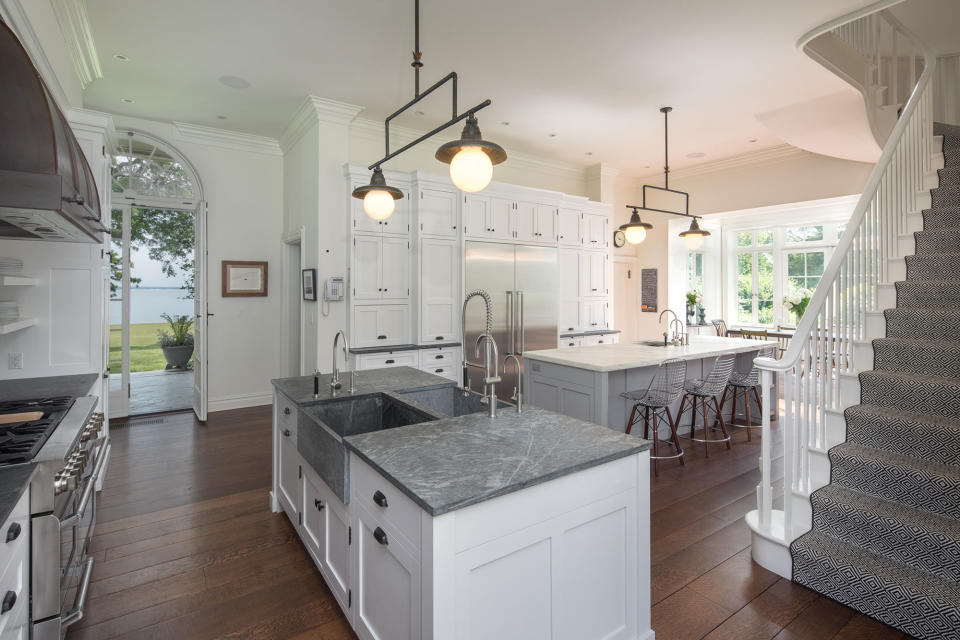
A single tower with a second-story terrace overlooks the back garden, which descends toward Long Island Sound and a private beach, nearly 400 foot long. “The house perches on its site,” says Daniel Gale Sotheby’s agent Nava Mitnick. “The way it sits back on its lawn makes a very casual and comfortable stroll down to the water.”
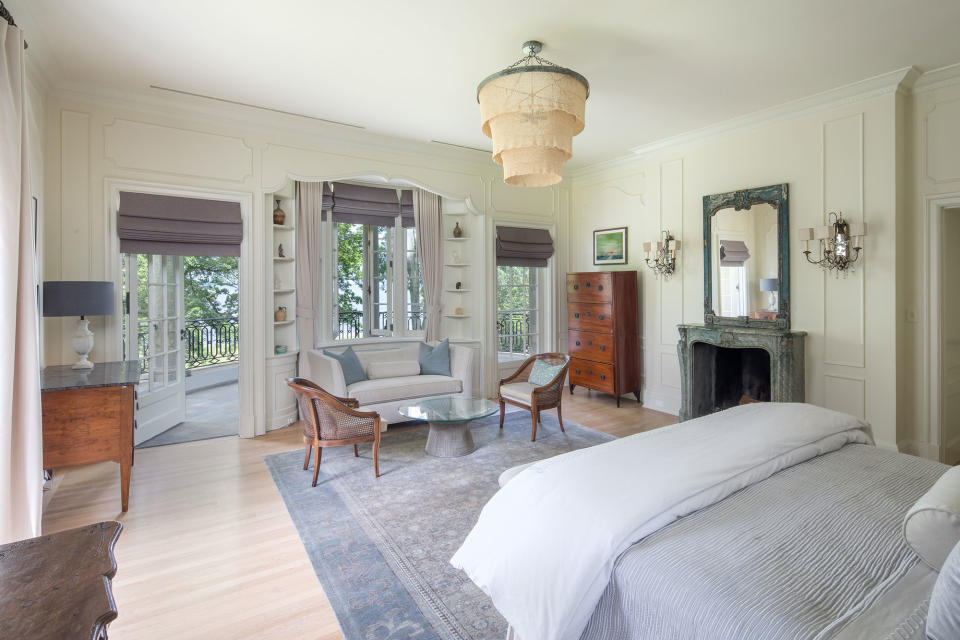
Short of a swimming pool, the 5-acre estate possesses practically every Gatsby-esque feature imaginable. “There’s really nothing like this house,” Mitnick says. “The quality of it, the workmanship is phenomenal. What makes it special is that the architecture is imposing but it’s really a very warm house.”
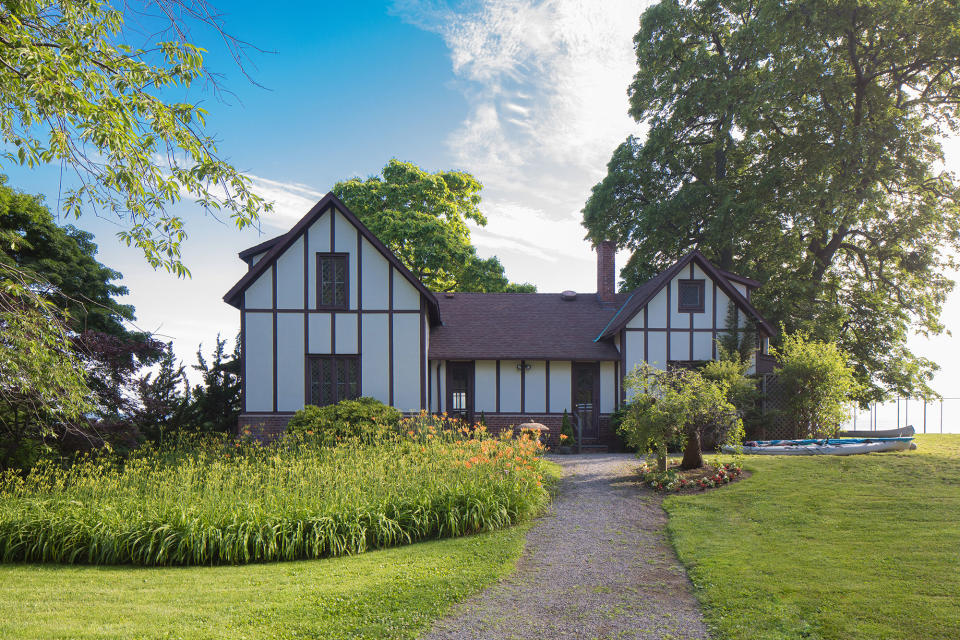
One other understated element ties the home to Fitzgerald’s fictional newcomer, Carraway, and his comparatively lowly home: At its waterline, the property includes a tennis court and a breathtaking beach cottage. The ‘cottage’ is actually a smaller two-story house which first sat upon the hill. It moved down to the beach when Harriman Rumsey began construction on her dream.
That smaller house, they say, was her home when Fitzgerald came to The Eggs.

